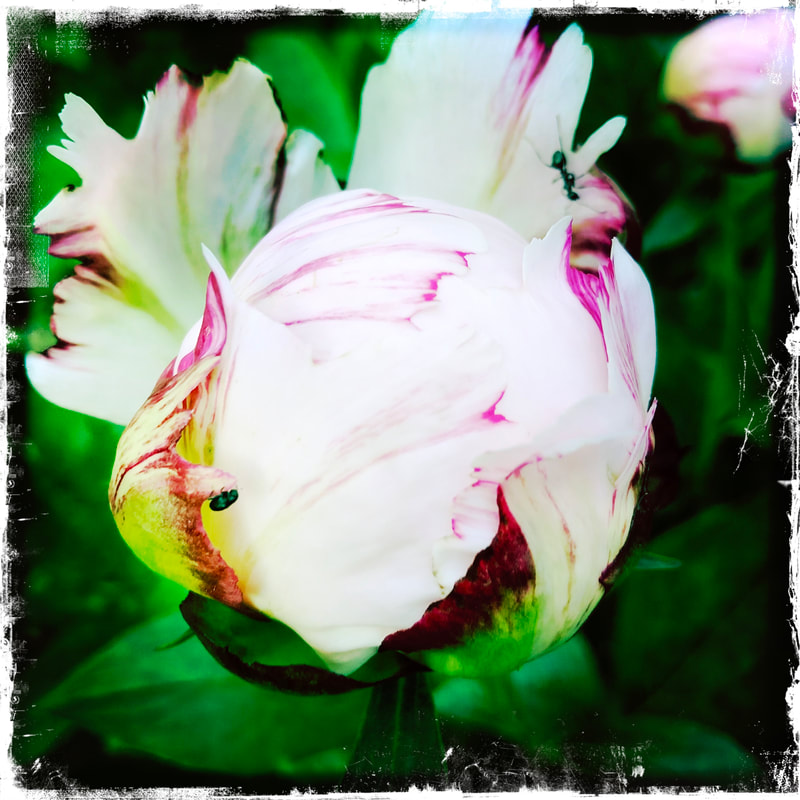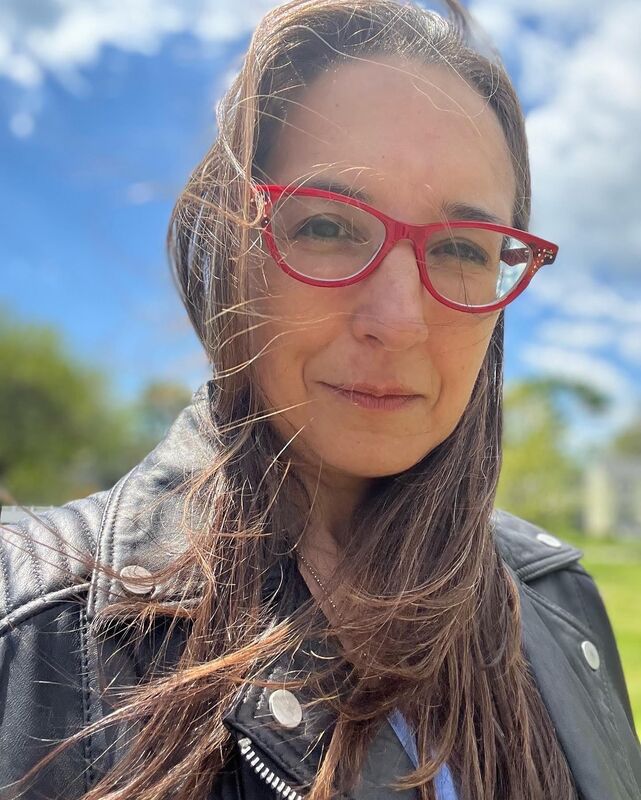ASSAY: A JOURNAL OF NONFICTION STUDIES
9.1
9.1
|
I believe in the power of anger and literary expressions powered by anger. It’s taken me decades to state this plainly, working from my first introduction to the literary essay in which the angry essay was hardly ever discussed—or when it was discussed, was dismissed as often ineffective or alienating for the reader. Add to that a lifetime growing up and operating in a culture in which anger—especially expressed by marginalized people—was stigmatized, blamed for social problems, and presented as a regrettable cul de sac that only led to pain and further difficulty.
The powerful, it turns out, don’t need the fuel of anger. Because of their wealth and social positions, they can do what they’d like to the people of the world, the environment, our democracy, and our futures, all without lifting a finger. And this is what I’d like to see when we teach rhetoric and writing: a sense that the playing field of expression is not level. Anger and angry expressions are stigmatized and feared because anger is fuel for fighting uphill battles. Anger as fuel is not the final form of a text; first-draft anger is a rant, a gathering of steam, a pause for fieldwork in one’s own mind and life. The final form can take any expression you might choose. Among the vast and wonderful nonfiction powered by righteous anger, I teach Adriana Páramo’s Looking for Esperanza, Jamaica Kincaid’s A Small Place, Jonathan Swift’s “A Modest Proposal,” the multiple and masterful essays of James Baldwin, Kiese Laymon, George Orwell, and Audre Lorde, memoirs by Alicia Elliot, Teresa Mailhot’s Heart Berries, John Hersey’s Hiroshima, the environmental writing of Edward Abbey, Wendell Berry, Rachel Carson. . .and so, so many others. I’ve written elsewhere about how I stumbled into teaching the rant: a five-minute free-write on anything that makes a writer angry. About a decade ago, I was working with composition students who had free reign in choosing research topics and yet couldn’t think of any ideas or questions they cared about. So, in desperation, I told them to start with what annoyed them. Ranting, it turns out, is excavation. Not only that—it’s delightful. After decades of being told not to yell, only to talk quietly, students smile with delicious joy when they are given permission to vent spleen and as they set to eviscerating their pet peeves on the page. Phrases, shouty-caps, exclamation points—it’s all fair game. This is more than brainstorming, I believe; this exercise will help students reconnect with their own agency, and will help them articulate thoughts and insights that clarify identity and strengthen bonds to community. I make sure not to moralize or shame. I smile with glee, admitting that sixty percent of my final published output starts with things that annoy me or piss me off, and I use that phrasing to invite them to feel a little thrill of transgression. Everyone—everyone—has things that piss them off, so everyone has things to write about. I also observed, from the first time I taught this exercise, that once students began to write, many of them observed—even in the space of five minutes—that their rant spooled outward into questions, dipped into sadness or veered sideways into a completely surprising connection or emotion. Because anger is fuel and life-force, it connects to what we care about, and the threads that poke into our annoyances often lead to humor, to insights about ourselves, and to larger social problems with big questions to ask. Seeing anger spontaneously shift within a free write is a fundamentally important experience for students and for people. Anger festers and solidifies if it’s repressed; when we explore it, we see that it passes and changes into other things. As the Buddhists say, “No mud, no lotus”; you need the stuff that seems gross in order to have the loveliest flowers. Anger is thought in compressed form. It is raw material of argument. It is not “emotional” and therefore non-rational. If we teach it as writing fuel, as the very building blocks of inspiration, we can follow it to its sources, which either indicate something personal the writer needs to address, or something about the world, or both. The specter of angry students might lead you, as it leads me upon reflection, to think about young men with guns, who are the shadows haunting our classrooms and our students’ psyches. But consider: if those angry, angry young men had been told, since they were small, that they could say anything on the page, and that anger shifts, they might have developed much earlier in their lives the capacity to bear their own rage, to examine it and question it, before it turned fatal. Anger can kill. Anger kills when we treat it as a completely irrational and uncontrollable force that must lead to physical violence, when our only option after its appearance on stage is physical destruction. Ultimately, if we’re interested in abolition of structures that perpetuate violence, we need to attend in our small ways to how we process anger, and how we can teach others to process anger in ways that lead to agency and integration. This is a kind of restorative justice for the classroom. And what to do with this expression? I believe it’s also important not to restrict the form of the final product. Sure, it might be a letter to the editor, or it might be a research paper, but it does not need to be a proposal to fix something. Part of how we limit and constrict student writing is by teaching that only certain forms and genres can hold anger; those are the “angry” forms. In reality, as you can see from the list above, anger fuels poetic expression. The anger might be connected to something deeply personal. And just like with any other skill, students will get better at venting anger on the page, and they will more quickly understand the productive nature of that feeling, and they will get better at identifying its sources, not years later but as they’re feeling them. So give the student the opportunity for a rant or two, but don’t have this be the required first step in narrowly scaffolded assignment. When I was a young essayist, I wrote about topics that made me angry, but I didn’t understand what to do with that venting. I saw anger on the page, and I immediately felt ashamed. Women are not allowed to be angry. I worried much too quickly about audience; “oh, everyone is going to see me as an angry girl.” This is what happens to some of us; we take on anger as if the emotion itself is a crime and a kind of defective identity. Sometimes it feels like a self-fulfilling prophecy, a trap; people had always told me I was angry because I felt things strongly. I felt all things strongly, but a flash of anger is enough to be branded. It took me so long to figure out what to do with those deep sources of anger because I wanted to write literary work, and instead, I felt, all I was doing was blasting the reader. Looking back at that writing now, I see that it wasn’t a blast at all. It was about pain and questions and social and personal factors that were not right. If I would have heard, instead, that this was fantastic, that I had so much to write about, that the ways to deepen anger can go into question, into proposals, into research, into radical revisions of society, into poems, into a million other emotions, I might have felt proud of my anger as one voice among many, and it might have felt not so hot and hard to carry. I’m so angry right now, at what is happening and has happened to this country. But the grooves worn in my brain and heart from years of practicing and examining anger constructively have melded into habits that sustain me. When I’m despairing, I think of community. I think of being with others. I think of murals and protest signs, and I laugh at tweets and videos that artfully skewer the controlling machinations of the powerful. I want all the choices we all deserve, and among those choices for expression and living, anger should take its rightful place. |
|
Sonya Huber is the author of seven books, including the new guide, Voice First: A Writer’s Manifesto, and the award-winning essay collection on chronic pain, Pain Woman Takes Your Keys and Other Essays from a Nervous System. Her other books include Supremely Tiny Acts: A Memoir in a Day, Opa Nobody, Cover Me: A Health Insurance Memoir, and The Backwards Research Guide for Writers. Her work has appeared in the New York Times, Brevity, Creative Nonfiction, and other outlets. She teaches at Fairfield University and in the Fairfield low-residency MFA program.
|

